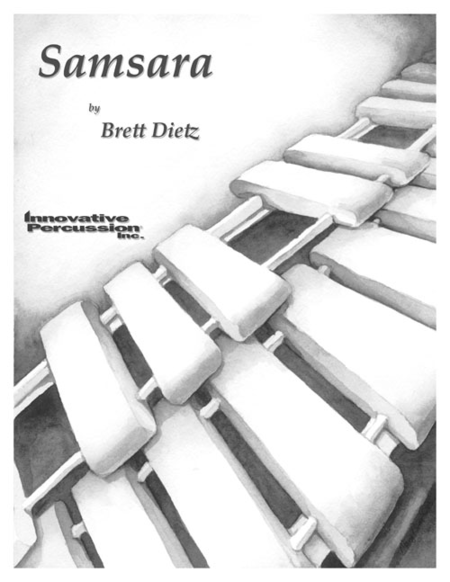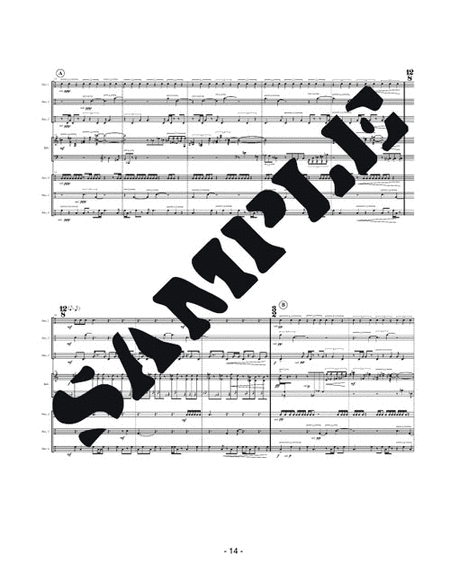Details
Description
SKU: IP.E-BD-SAM
Composed by Brett Dietz. Score and set of parts. Innovative Percussion #E-BD-SAM. Published by Innovative Percussion (IP.E-BD-SAM).8.5x11 inches.
Composer's notes: Samsara for solo marimba and percussion ensemble was commissioned by and dedicated to Frank Kumor and the Kutztown STate University Percussion Ensemble. Samsara is a Sanskrit word (liturgical language of Buddhism) meaning "the endless cycle of suffering caused by birth. death, and rebirth. The composition utilizes a solitary pitch cell that is manipulated throughout the piece's six movements. Samsara was premiered at the perKumania Percussion Festival in Paris, France and was also played at the College Music Society International Conference in Bangkok, Thailand.
-Samsara" is an extremely challenging work for marimba solo and six percussionists. The title means "the endless cycle of suffering caused by birth, death, and rebirth." The musical image of the word samsara is portrayed through dissonance, rhythm, and repetition. As with most of his other works, Dietz utilizes a vast array of polyrhythms and mixed meters to create different musical gestures. Structurally, the piece has six movements with the percussionists tacet on the first, third, and fifth movements. The opening movement has the marimba stating several motives, at primarily soft dynamics, that are later used throughout the piece in various disguises. The second movement is forceful and syncopated with the sextet serving as two separate trios. The third movement is a marimba solo that starts with the loud and raucous power from the previous movement, but ends with a soft transition into the serene fourth movement. Movement five uses motives from movement one, then leads directly into the lively and spirited sixth movement to close out the work. Dietz does an outstanding job of portraying the concept of samsara in this piece through the birth (first movement with the primary motives), death (dark and forceful second and third movements), sadness of death (soft and retrospective fourth and fifth movements), and rebirth (light and brisk final movement). While the composition is well structured, the technical and musical aspects are very challenging. A talented marimba soloist and mature ensemble are required. - Brian Zator Percussive Notes, May 2010.


 Share
Share